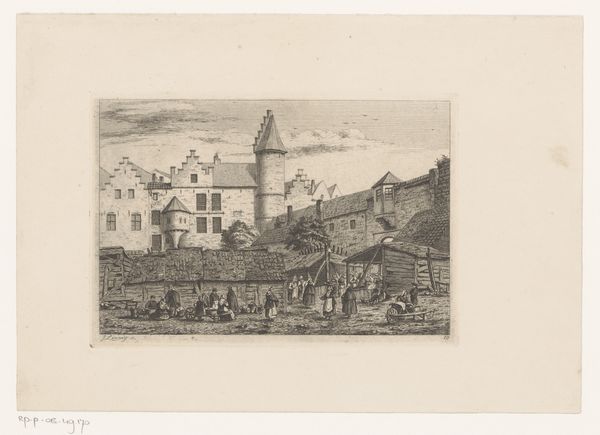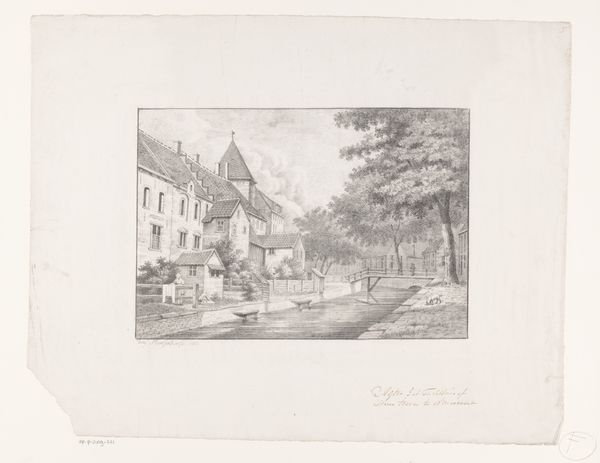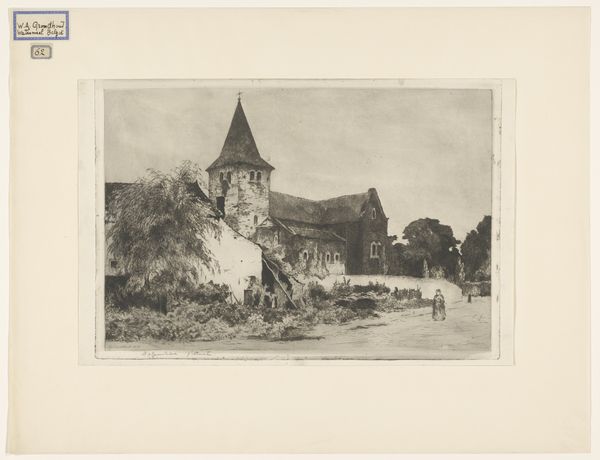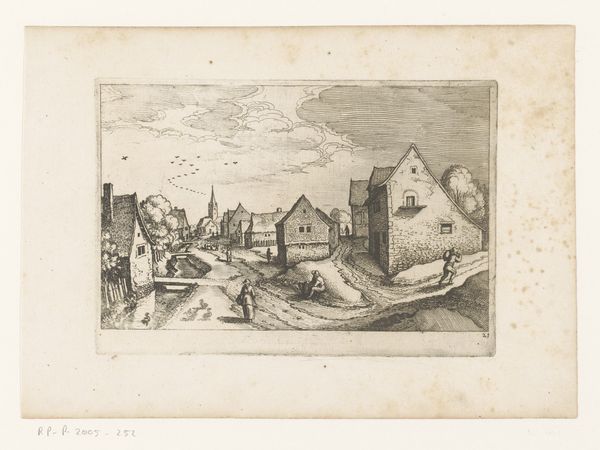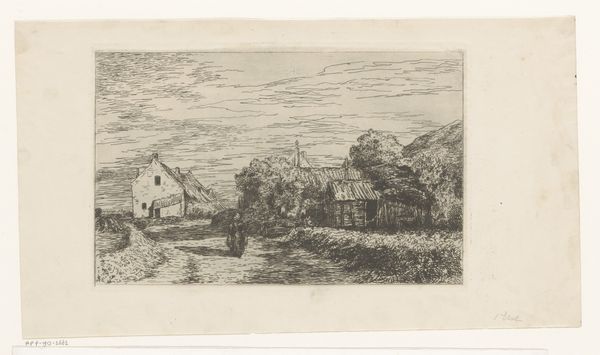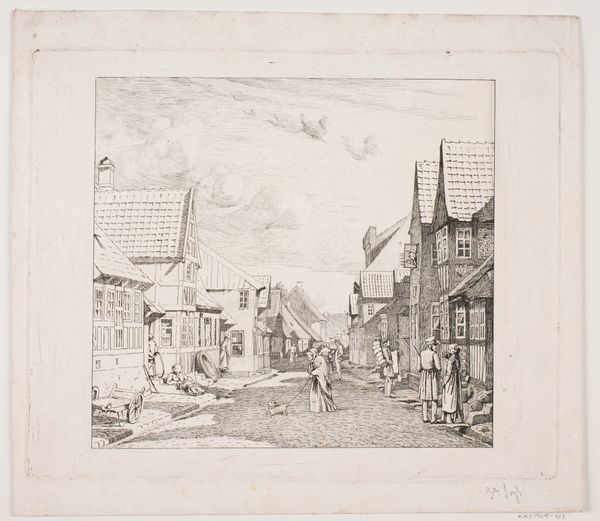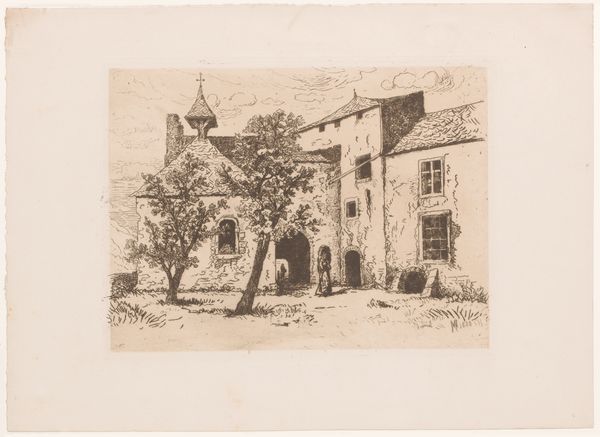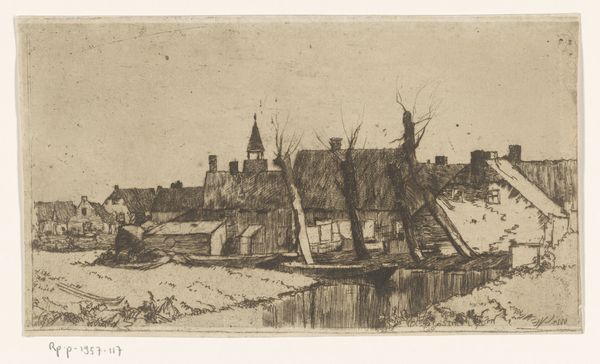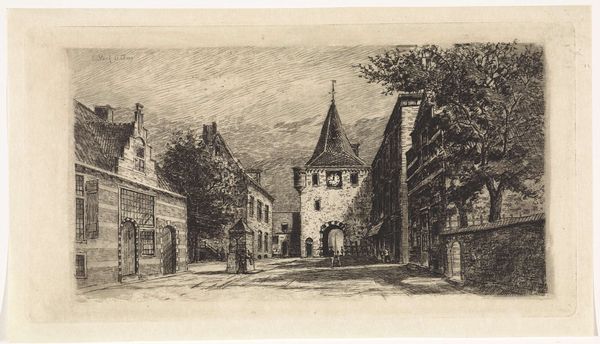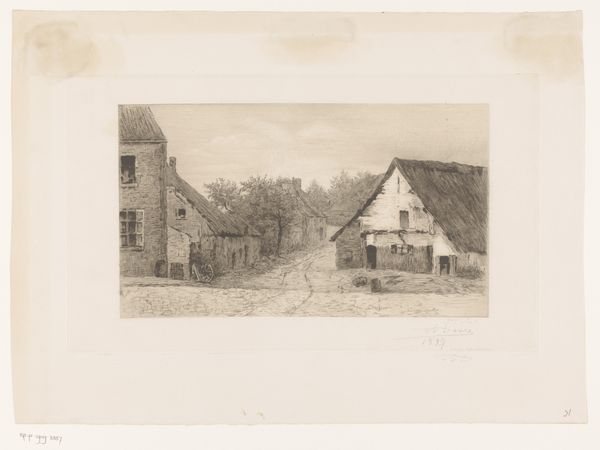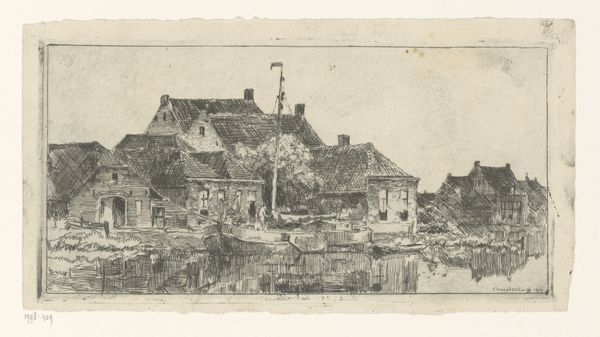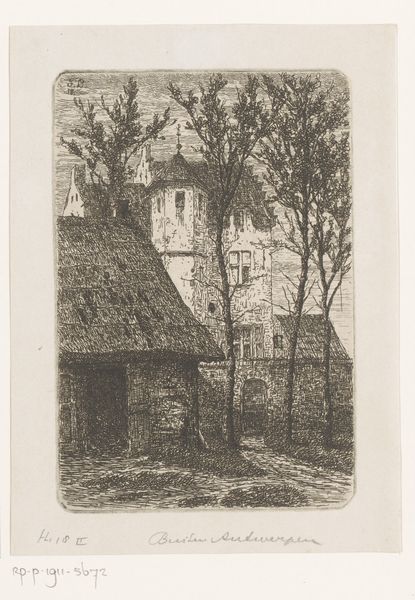
Gezicht op een straat in een bergdorp 1883
0:00
0:00
print, etching
#
ink drawing
# print
#
pen sketch
#
etching
#
pencil sketch
#
landscape
#
etching
#
mountain
#
cityscape
#
realism
Dimensions: height 277 mm, width 341 mm
Copyright: Rijks Museum: Open Domain
Curator: The work before us, dating from 1883, is titled "Gezicht op een straat in een bergdorp," which translates to "View of a street in a mountain village." Editor: It's a wonderfully delicate scene. The etched lines are so fine, giving it an almost ethereal quality. There’s a rustic stillness to it. Curator: Indeed. Crafted by Maria van Hohenzollern-Sigmaringen, also known as the Countess of Flanders, this print is an etching that captures a quiet moment in what appears to be a rural Alpine village. Etching as a medium allows for a wide range of textures through varied applications of acid resist, what do you make of it? Editor: Considering the Countess’s status, the choice of representing such a commonplace scene is interesting. Was she drawn to represent the everyday life of common people, offering perhaps a commentary on the social structure? One can imagine the process: the acid biting into the metal, a tangible representation of transformation through labor. Curator: Precisely, the physical act of etching and printing made these images accessible. She, as an aristocratic woman, uses these techniques to represent and perhaps, circulate images of a specific landscape as tokens of status and aesthetic value. Look at how buildings huddle along the winding lane with timber clustered alongside. This serves to romanticize rural existence but one could ask at what expense. Editor: And see how that composition funnels the eye towards the mountains in the distance, adding depth and creating a sense of the village nestled within this vast landscape? I am more focused on her as patron: considering the intended audience and the dissemination of the prints, perhaps we're looking at a curated depiction of rural life designed to project a particular kind of nobility and power through the lens of realism? Curator: Very insightful. These artworks had performative qualities embedded into them. One can see "Gezicht op een straat in een bergdorp" as part of constructing a modern idea of how the social hierarchy functioned, or even should function. Editor: It does make you consider who was meant to see this image and what values it was intended to reinforce or challenge. Thanks to her process, it does something radical to make something normally enjoyed by few be afforded for the gaze of many. Curator: Exactly, reflecting on process can open exciting pathways into what imagery does to its beholders, particularly around how one gains understanding. Editor: That said, context is invaluable in shaping the experience. It brings an entirely new depth to appreciating its nuances and relevance.
Comments
No comments
Be the first to comment and join the conversation on the ultimate creative platform.
